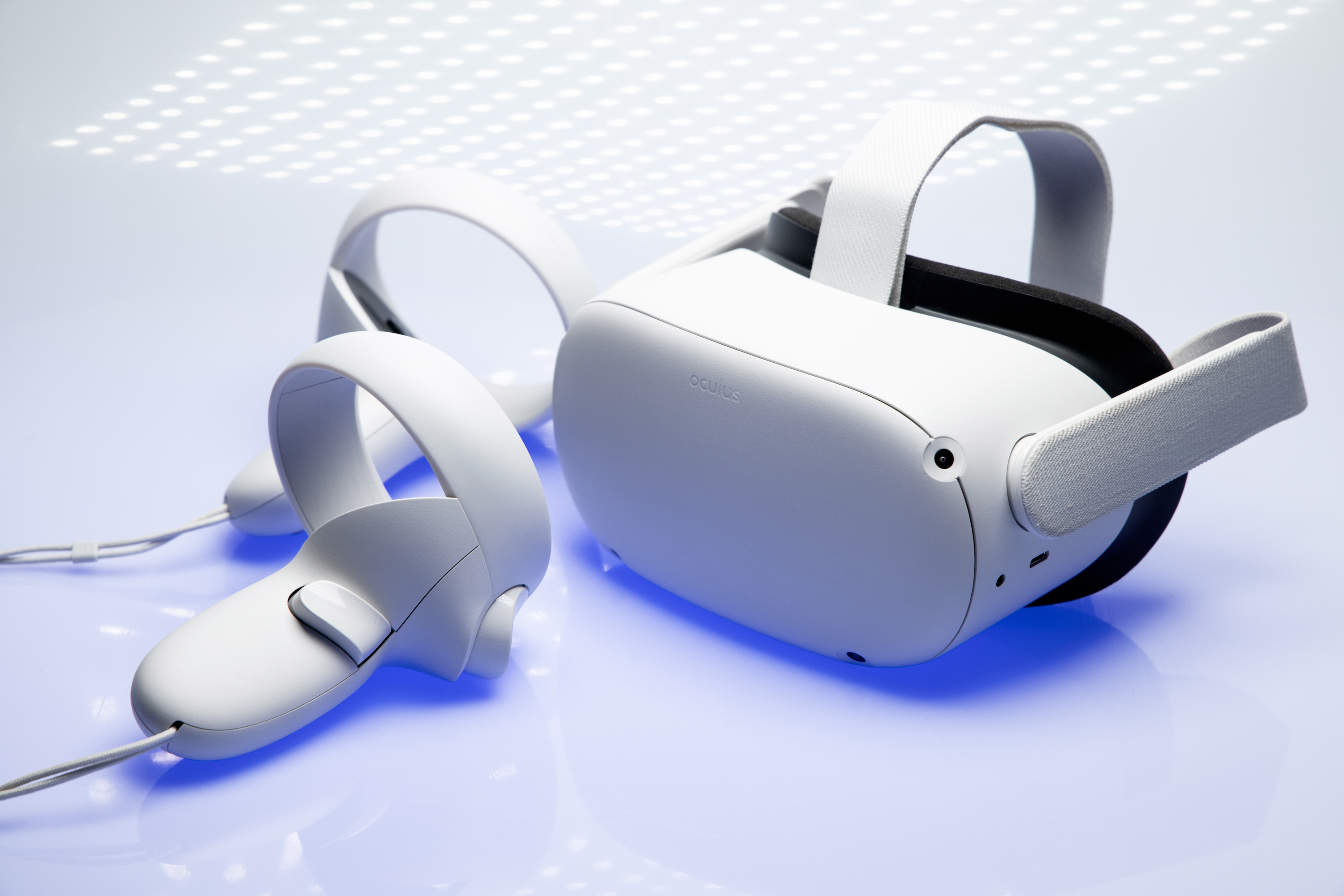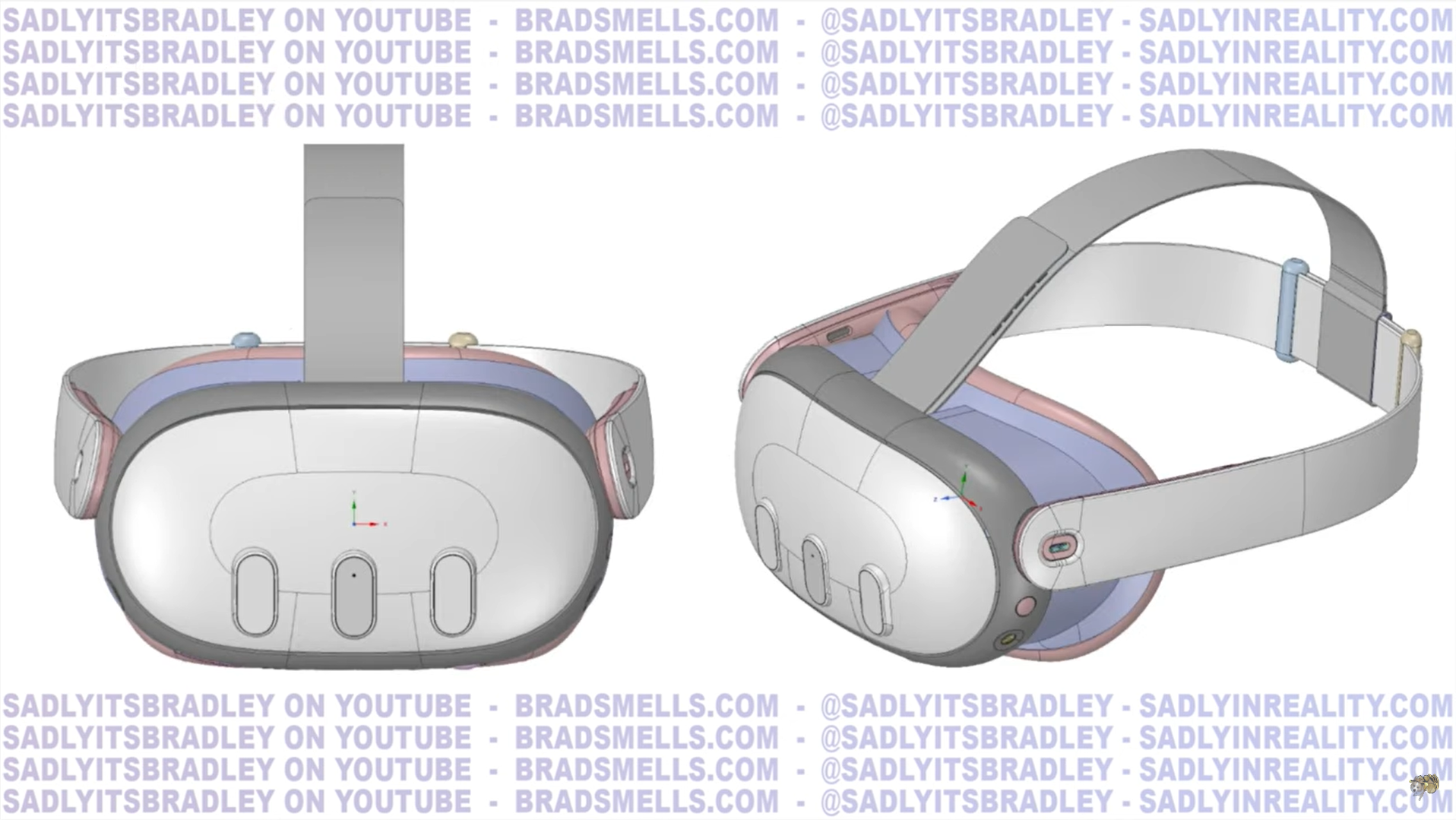Meta Quest 3 just leaked — and it’s a mixed reality headset
Leaked CAD images suggest that the rumored headset will not be strictly VR

Update: An artist made 3D renders based on the leaks mentioned here, and they make the Quest 3 look way slimmer than the Quest 2.
The Meta Quest 3 leaks have been few and far between. The leaks for the Meta Quest Pro have been much more extensive, with design, box art and release date all seemingly confirmed — though for now still rumors.
However, that all changed today when analyst Brad Lynch posted a YouTube video showing off potentially the entire device. Nicknamed “Project Stinson” according to Lynch’s sources, the Meta Quest 3 is set to be a mix of the Meta Quest Pro and Meta Quest 2. The headset is likely to launch sometime in 2023, so do not expect it to launch at Meta Connect in October.
The real bombshell of the reveal though, is that it looks like the Meta Quest 3 will be a mixed reality headset rather than a pure VR device. Lynch suggests that this could be down to the rumored Apple VR/AR headset shaping the market, and I am inclined to agree.
Meta is currently the leader in terms of consumer-grade VR headsets. If they are leaning toward mixed reality, that indicates they think the market will shift in that direction, either naturally or due to Apple’s entrance.
Meta Quest 3: Biggest rumored features
Aside from a shift from virtual reality to mixed reality, there are a couple of other changes with the Meta Quest 3 versus the Meta Quest 2.
First, the device is expected to get a couple of upgrades. Lynch says that the Quest 3 should get an upgrade from the current Qualcomm Snapdragon XR2 with the XR2 Gen 2, which is rumored to be codenamed “Project Halliday.” Meta recently signed a multi-year agreement to exclusively use Qualcomm chips, so the Quest 3 getting upgraded to the current standard in VR chipsets is not a shock.
Sign up to get the BEST of Tom's Guide direct to your inbox.
Get instant access to breaking news, the hottest reviews, great deals and helpful tips.
The Quest 3 could also get a bump in RAM and storage. Lynch says current rumors indicate that a model of the Quest 3 with 512GB SSD and 12GB RAM could be in the works, but did not indicate if this would be the standard for the base model. At this time it is unclear how many models of the Quest 3 will exist.

Pancake optics will also reportedly make an appearance, a feature that was set to make its debut with the Meta Quest Pro until the PICO 4 beat it to market. This technology allows manufacturers to create thinner, more compact display lenses that ultimately can contribute to increasing resolution or making room for additional cameras. It seems that pancake optics will become the standard for lens design, at least for consumer-grade VR headsets.
On the smaller side of things, the Quest 3 looks set to reintroduce fine-tuning the interpupillary distance (i.e. the distance between lenses). This had disappeared in the Quest 2, which only gave users three broader settings for IPD. While a seemingly small quality of life change, it gives users a more comfortable experience.
It also seems that there may be some compatibility between the Quest Pro and Quest 3 — at least when it comes to accessories. The Quest Pro is rumored to require a charging dock for its controllers, and the CAD renderings that Lynch shows in his video suggest that the Quest 3 will include a similar charging port. This may also indicate that the Pro controllers will be compatible with the Quest 3, though that is purely speculation at this time.
Finally, one of the biggest rumors point to one feature that may be lacking. The Quest 3 is apparently set to not include eye or face tracking. According to Lynch, the eye and face tracking requires additional cameras and an extra chip that makes for an expensive headset, which is why it will likely be reserved for the Quest Pro. While a bit of a disappointment, at least this omission may keep the Quest 3 a relatively affordable headset.
Read next: Mixed Reality vs Augmented Reality vs Virtual Reality — what's the difference?

Malcolm has been with Tom's Guide since 2022, and has been covering the latest in streaming shows and movies since 2023. He's not one to shy away from a hot take, including that "John Wick" is one of the four greatest films ever made.
